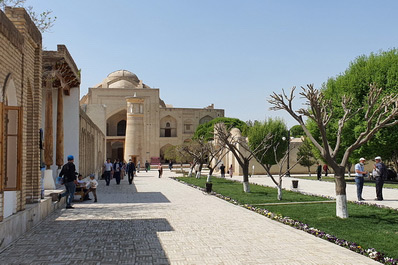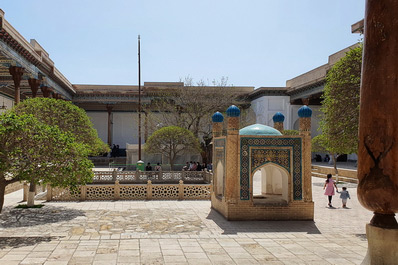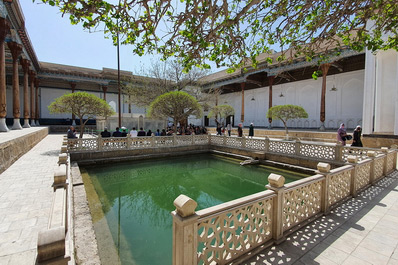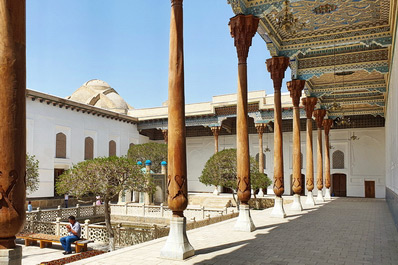Necropolis of Sheikh Bahaaddin Naqshband and Mosque Namazgoh, vicinity of Bukhara
Necropolis of Sheikh Bahaaddin Naqshband (16thc.)
Necropolis of Sheikh Bahaaddin (Baha-ad-Din) Naqshband (died in 1389), a patron of Bukhara, is located near Bukhara. He was born in the village, named later after Qasri Orifan - "castle of those who had known divine truth". It is considered that sheikh Naqshband received initiation from Khodja Gijduvani who appeared in his dream and ordered to become a pupil of Amir Kulal. Another his teacher was Sultan Halil, Sufi and governor from the Ching-gisids. Sufi community of Naqshband denied ascetics and was active in economy. The words "Our way to the God is communication, but not hermitry" belong to Naqshband. Sheikh became famous in the Islamic world when did three-year hadj.
Memorial complex of Bahaaddin Naqshband had been forming for five centuries. The rectangular courtyard with the tomb of sheikh forms its center. Memorial mosques of the 19th century adjoin the courtyard. Modern aivan with wooden columns surrounds the courtyard on perimeter. Necropolis of the Shaybanid governors Iskander-khan (died in 1583) and his son Abduliah-khan II (died in 1598) is located at the entrance. The largest building is khanaka with huge dome on arches. Khanaka was named after Abdalaziz-khan (died in 1550) from Shaybanids who ordered to build it.
The out-of-town Mosque Namazgoh (12th- 16thcc.)
In the 11th century the Qarahanids had the garden-reserve to the south from Bukhara. Arslan-khan III decided to build namazga mosque there at the beginning of the 12th century. Namazga is a special mosque used only on two Muslim holidays-Kurban-hait and Ramazan-hait. The mosque of Arslan-khan was reconstructed in the 14th century, and in the 16th century it was supplied with arched gallery having a high portal and minbar. Today's mosque is a frontal structure in a form of long brick wall with plinth. Mihrab in its center is decorated with brick and carved terracotta.





